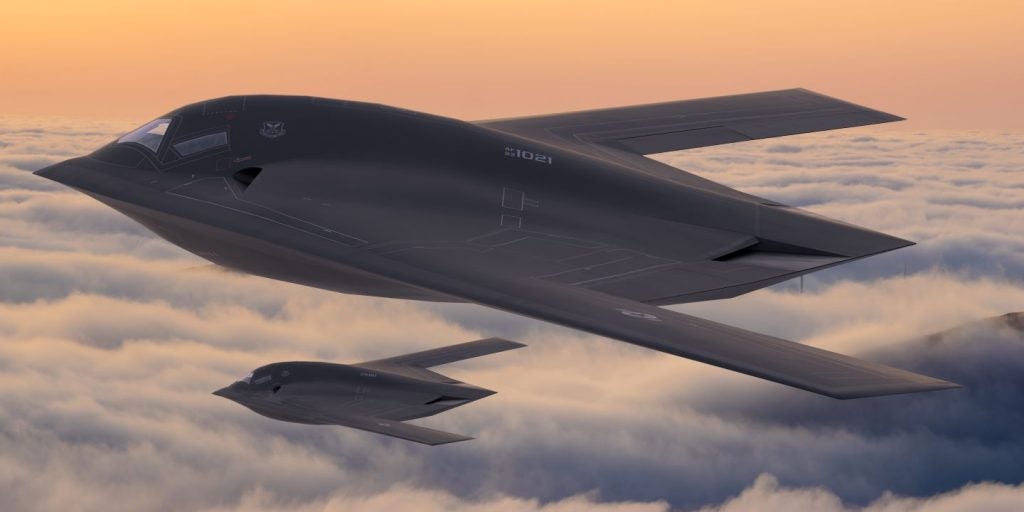On Monday 22 January, the US Department of Defense announced the start of low-scale production on the Northrop Grumman B-21 Raider stealth bomber. The B-21s are manufactured at the United States Air Force Plant 42 in southern California, where six other units are currently under construction. This represents the culmination of the Long Range Strike Bomber (LRS-B) program, which began in 2011 to create a sixth-generation stealth bomber. The B-21 is set to replace both the B-1 Lancer and the B-2 Spirit, becoming the primary stealth bomber in the US fleet. Many details on the B-21 remain highly classified, including its exact size, structure, top and cruising speeds, ceiling limit, number and type of engines, projected weapons and enabling systems, and onboard sensors. However, it is considered to have highly advanced stealth capabilities. The B-21 has been manufactured to minimise all edges, including unique cockpit windows designed to eliminate seams and joints, thus reducing radar signature. It is also known that the B-21 will be capable of delivering nuclear-armed weapons.
The B-21 is projected to be the world’s first sixth-generation warplane, with a unit cost estimated around $550m per unit in 2010 dollars, adjusted to around $750m per unit given inflation. This cost represents a significant decrease over the older B-2 bomber, with a unit cost of $2bn per unit. This is due in part to the B-21 being constructed of more advanced radar-absorbent materials which result in reduced upkeep and maintenance costs. The larger economy of scale for the B-21 also contributes to its reduced size, given that 100 units have been ordered, compared to 20 B-2s. Additionally, in the three decades since the B-2 was released, technological advances have made advanced aerospace and stealth manufacturing more efficient and affordable. However, the exact costs of the B-21 have remained classified, even to members of Congress. Several Representatives and Senators, notably including the late Senator John McCain, have criticised the high degree of secrecy in the context of overcharges by defence contractors, including Northrop Grumman.
The high degree of secrecy surrounding the B-21 is related to the possible hacking of F-35 designs by Chinese agents. In 2009, the Joint Strike Fighter program which developed the F-35 suffered a data breach. When China revealed its J-31 fighter in 2012, analysts noted its similarities to the F-35, which allegedly incorporated stolen F-35 design principles. The extreme secrecy surrounding the B-21 intends to prevent any similar data breaches and is typical of other stealth aircraft.
The B-21’s advanced stealth capabilities enable it to execute deep strike missions against previously impervious targets. Furthermore, it can also serve as a signals intelligence (SIGINT) platform, conducting high-altitude long-range reconnaissance and intelligence collection missions. Theoretically, the B-21 could also conduct airborne early warning and control (AEW&C) missions, although with much greater survivability than the current Boeing E-3 craft. The B-21 also plays a crucial role in US network-centric warfare concepts. In a hypothetical strike mission, the B-21 could work in conjunction with other highly networked aircraft such as an F-35, which operate at lower ceilings and speeds, directing F-35 launched weapons to their final targets using the B-21’s longer-range guidance systems. Finally, the B-21 is the world’s first aircraft that can be operated as both a manned or remotely operated. On especially dangerous missions, this would enable the US Air Force to keep valuable pilots out of harm's way.
Other nations are already reacting to the B-21’s development. Chinese researchers have claimed their advanced hypersonic missiles, which can travel at up to Mach 6, can intercept B-21s in simulated wargames. Although the B-21 does not fly at such speeds, its advanced stealth capabilities are designed to prevent any possible missile locks. The full potential and costs for the B-21 are still unknown, given this aircraft’s highly classified status, however, it seems likely to lead the development of the sixth generation of aircraft.









